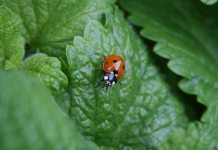
 The Herbal Alchemist’s Handbook: A Grimoire of Philtres, Elixirs, Oils, Incense, and Formulas for Ritual Use, by Karen Harrison
The Herbal Alchemist’s Handbook: A Grimoire of Philtres, Elixirs, Oils, Incense, and Formulas for Ritual Use, by Karen Harrison
Weiser, 9781578634910, 239pp., 2011
In this book, we explore Herbal Alchemy as practiced in the West, through the uses of the plants and their Planetary signatures as developed by the 14th century philosopher and Alchemist Paracelsus.1
A book on this topic couldn’t start with a more hopeful introduction. After a brief description of alchemy in different forms (lead to gold, internal alchemy, alchemy as a path to the divine), the author states this as her purpose for the book. While it sounds good, this is the beginning of my problems with the book: her use of the terms “alchemy” and “alchemist.”
Perhaps it is my understanding of the words, but to me the notion of physical alchemy is about processing, distilling, refining, and creating; so an herbal alchemist would be someone who takes plants and uses them for that purpose. This book discusses incense, oils, bath salts, potpourri, philtres, elixirs, and fluid condensers. While the production of more complicated materials, like oils, are discussed they are not explained in a way that would allow the reader to make them, for the most part, this book is reliant on store bought essential oils. This is not in and of itself a bad thing, but the idea of an herbal alchemist brings to mind someone who refines and creates, rather than buys and mixes. It’s the cookbook equivalent of “buy a frozen dinner and microwave.” Also the subtitle of the book calls it a “grimoire” for “ritual use” which makes it sound like it’s a text linked to ceremonial or hermetic magick, but nothing in the text supports this. It’s more of a witchy text, which again isn’t a bad thing, just not what the title evokes for me.
The author claims her work is based on the ideas of Paracelsus, but the book lacks citations, a bibliography, or even suggested reading list. This is highly problematic as many of her attributions are not explained. Sometimes they are attributions that are more or less occult common knowledge, and other times the numbers, colours, herbs and their meanings vary from the common or traditional systems. If I were using some of these recipes I would want to know where these differences came from. This goes a step father with the herbs of Uranus, Neptune, and Pluto, as they simply weren’t observed in the 14th century, which isn’t to say her attributions are necessarily wrong, but again, I would like to know what they are based on. She lists one to two dozen herbs that are associated with each planet, but only a scant handful of the herbs are given specific meanings. Many times herbs lack specific meanings or powers, and are simply given a generic lunar herb. Again, this isn’t to say it’s wrong, but when there is no reference of the origins to the ideas it’s impossible to say, and it looks like the author doesn’t know.
There are a few problems with the information given in the text as well. Minor things, but that can be important. For instance, nowhere in the discussion of philtres is there a mention of time limits or expiration dates, and though I’d like to believe more people would know to check for smells and mould, I know others would just leave it on a shelf for weeks, come back thinking it’s safe (it’s magick!) and make themselves sick. Also, when making oil blends from essential oils Harrison says there is no need to dilute essential oils2 despite the fact that many will burn the skin if they’re not diluted with a carrier oil.
So, now that I’ve picked that apart, what’s left? Well each planet, including the modern ones, are listed with an explanation of what they represent, and then what energies, colours, stones, and herbs are associated with them. Then there are brief chapters on different forms: incense, oils, elixirs, and so on. This entire section one the forms is 24 pages long, so it’s not in-depth, though it does include a fascinating process for making an elixir from an herb to include the salt, sulphur, and mercury of the herb. Lastly it moves into how to combine things together. The book is more or less a pick-and-choose cookbook, figure out what you want and what planet(s) it represents, pick a few herbs and oils, and toss them together. Half of the book — literally it’s a page off from being 50% — is the book proper, the second half is the appendices which are varying lists of attributes by categories like planets, herbs, and moon phases.
I was not impressed with the book, part of it may be my expectation on what alchemy is and requires, and how that isn’t just mixing three oils together, but there are also issues with the information at times. These is a lot of good information that is usable in the book, but I feel it is a lot of work to sift out from the rest. This text is not any clearer than any other book of herbs in magick, and does nothing to set itself apart from the crowd.








